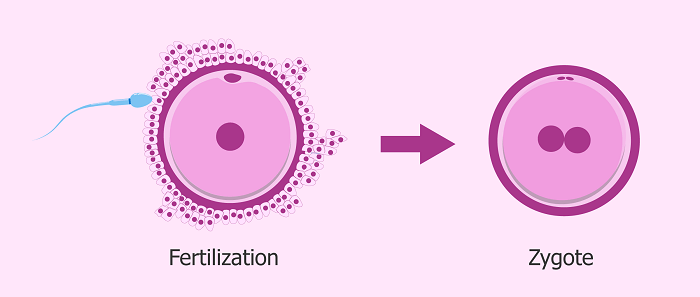Use Zygote in a sentence. How to use the word Zygote in a sentence? How is “Zygote” used in English? What are the rules of use of “Zygote”? Sentence for Zygote.
Definition of Zygote
A zygote is a single cell that forms when two gamete cells (sperm and egg) fuse during fertilization. The resulting cell contains all the genetic information necessary to develop into a complete organism. In humans, the zygote is the first stage of development and marks the beginning of the embryonic period. As the zygote divides and grows, it eventually becomes a blastocyst, which implants into the uterine lining and begins to develop into an embryo. The zygote contains both maternal and paternal genetic material, and this combination of DNA determines many of an organism’s characteristics and traits.

How is “Zygote” used in English? What are the rules of use of “Zygote”?
“Zygote” is a term used in biology to describe the first cell that results from the fusion of two gamete cells, which typically occurs during fertilization. Here are some rules for using “zygote” in English:
- Use in context of sexual reproduction: The term “zygote” is used in the context of sexual reproduction, which involves the fusion of gamete cells from two different individuals to create a new organism.
- Use to describe early stages of development: The zygote is the first stage of development for many organisms, including humans, and it is the precursor to the embryo.
- Use in scientific contexts: The term “zygote” is most commonly used in scientific contexts, such as in biology textbooks or academic papers.
- Use with appropriate modifiers: When using the term “zygote,” it is important to include appropriate modifiers to provide more information about the organism in question. For example, “human zygote” or “animal zygote” can help to specify the type of organism being discussed.
- Use in present or past tense: “Zygote” can be used in both the present and past tense. For example, “the zygote is the first stage of development” or “the zygote was formed after fertilization.”
Overall, “zygote” is a technical term that is primarily used in scientific contexts to describe the first stage of development for many organisms. When using the term, it is important to include appropriate modifiers and to use it in the appropriate tense.
Examples of Zygote in a sentence
Here are 30 examples of how to use the word “zygote” in a sentence:
- The zygote contains all the genetic information needed for development.
- The sperm and egg combine to form a zygote during fertilization.
- The zygote begins to divide and grow into an embryo.
- The zygote implants in the uterine lining and begins to develop.
- The first stage of human development is the zygote.
- The zygote’s genetic material determines many of an organism’s traits.
- The zygote undergoes multiple cell divisions to form a blastocyst.
- The zygote is the first step in the process of human reproduction.
- The zygote forms after the fusion of a sperm and an egg cell.
- The zygote’s genetic code is unique to the individual organism.
- The development of the zygote is critical to the health of the fetus.
- The zygote contains all the information needed to form an entire organism.
- The zygote is a diploid cell containing chromosomes from both parents.
- The zygote divides to form cells with specialized functions.
- The zygote is the starting point for the formation of a new individual.
- The zygote divides into cells that differentiate into specific tissues and organs.
- The zygote begins to divide and differentiate as it moves down the fallopian tube.
- The zygote is the first cell of a new life.
- The zygote develops into an embryo that grows into a fetus.
- The zygote undergoes mitosis to form a blastula.
- The zygote marks the beginning of embryonic development.
- The zygote is the result of the fusion of haploid cells.
- The zygote is the only cell that is capable of forming an entire organism.
- The zygote’s DNA determines its physical and genetic traits.
- The zygote is formed when the nuclei of the sperm and egg cells combine.
- The zygote forms after the fertilization of the egg cell by the sperm.
- The zygote is the first cell of a new individual with unique genetic material.
- The zygote is a totipotent cell capable of developing into any type of cell in the body.
- The zygote divides into two cells, then four, and so on.
- The zygote marks the beginning of a new generation.